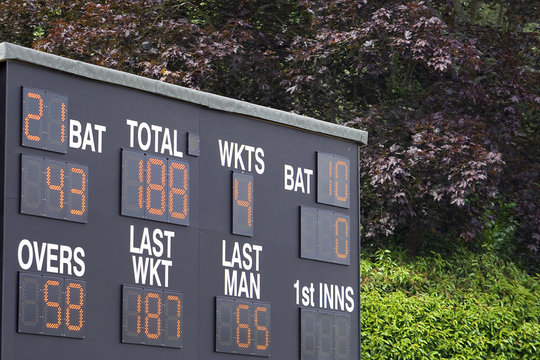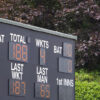
In the high-octane drama of the ICC Women`s World Cup, every run, every wicket, and every strategic maneuver is scrutinized under the global cricketing spotlight. Yet, sometimes, an equally crucial but less visible antagonist emerges: the clock. The recent fixture between India and Australia, culminating not just in a thrilling contest but also in a penalty for India due to a slow over-rate, casts a fascinating light on this often-overlooked aspect of modern cricket. It serves as a stark reminder that while teams are battling each other on the field, they are also engaged in a perpetual, silent struggle against time itself.
The Visakhapatnam Vignette: A Fine Line Between Strategy and Efficiency
The match in Visakhapatnam was, by all accounts, a classic. Australia, the defending champions, showcased formidable batting prowess to successfully chase down India`s challenging total of 330 with an over and three wickets to spare. A gripping encounter for fans worldwide. However, the post-match discourse extended beyond just run-rates and strike-rates. Attention shifted to a different kind of deficit: India was found to be one over short of their stipulated target once time allowances were factored in. The consequence? A fine amounting to five percent of their match fee.
India`s captain, Harmanpreet Kaur, reportedly pled guilty to the offense and accepted the proposed sanction, precluding the need for a formal hearing. This swift acceptance underscores the clear-cut nature of the infraction. But for the uninitiated, what exactly does a “slow over-rate” truly signify, and why does the International Cricket Council (ICC) wield such a firm hand in its enforcement?
Why Every Second Counts: The Essence of Over-Rate Penalties
Far from being mere administrative red tape, the diligent enforcement of over-rates is fundamental to the integrity, appeal, and enjoyment of cricket. Its impact is multifaceted:
- Flow and Rhythm of Play: A lethargic pace can disrupt the natural ebb and flow of a match, affecting both the players` concentration and the spectators` engagement. Prolonged pauses for strategy or minor adjustments can transform a dynamic contest into a tedious waiting game.
- Fair Play and Equity: Each team is allocated a specific timeframe to bowl their quota of overs. Failing to meet this target not only indicates inefficiency but can also, intentionally or not, be perceived as gaining an unfair advantage by prolonging strategic discussions, delaying fielding changes, or simply `killing` time.
- Broadcaster and Fan Experience: Modern cricket is a meticulously scheduled global spectacle, often tied to strict broadcast slots. Delays can cascade, impacting subsequent programming, frustrating dedicated viewers, and ultimately diminishing the sport`s global appeal and commercial viability.
The ICC`s commitment to maintaining a brisk and engaging sport is enshrined in its regulations, specifically Article 2.22 of the Code of Conduct for Players and Player Support Personnel, which directly addresses minimum over-rate offenses. It`s a clear directive: adhere to the schedule, or face the financial and reputational consequences. For repeat offenders, penalties can even escalate, signaling the ICC`s unwavering stance.
The Captain`s Conundrum: A Delicate Dance Between Tactics and Time
While it`s easy to critique a slow over-rate, the challenge of maintaining pace is often more complex than it appears from the sidelines. Captains, particularly in high-pressure tournaments like a World Cup, juggle a bewildering array of demands:
- Strategic Consultations: Discussions about field placements, crucial bowling changes, and evolving batting plans are vital and require deliberation.
- Player Management: Dealing with sudden injuries, equipment malfunctions, or simply allowing a bowler a moment to compose themselves can consume precious minutes.
- External Factors: The advent of Decision Review System (DRS) referrals, crowd disturbances, or even momentary weather interruptions can all eat into the clock, often beyond the team`s direct control.
In essence, the captain transforms into a multi-tasking maestro, simultaneously orchestrating on-field tactics, managing player welfare, and keeping one eye firmly fixed on the umpire`s watch. Is a slow over-rate always a lapse in discipline, or sometimes merely the inevitable friction of high-stakes strategy rubbing against the relentless march of time? Perhaps, in the crucible of elite competition, it`s often a bit of both.
Beyond the Fine: A Call for Efficiency and Discipline
While a five percent match fee fine might seem a relatively minor slap on the wrist for an elite national team, its true significance lies in the unequivocal message it conveys. It serves as a tangible reminder that professional cricket demands not only exceptional skill, astute strategy, and unwavering determination, but also an unfaltering adherence to the rules that govern the game`s very structure and pacing. It champions efficiency as much as it celebrates elegance.
For teams vying for the coveted ICC Women`s World Cup, every detail, both explicit and subtle, holds weight. The slow over-rate penalty, therefore, functions as a crisp, technical note in the grand symphony of competitive cricket – a necessary, albeit sometimes irksome, reminder that even in the heat of battle, the game must progress. This ensures a fair, engaging, and captivating experience for every participant and spectator. In a sport where inches and milliseconds can dictate triumph or defeat, effectively managing the clock is just another essential skill set, one that truly great teams master both on and off the field.




